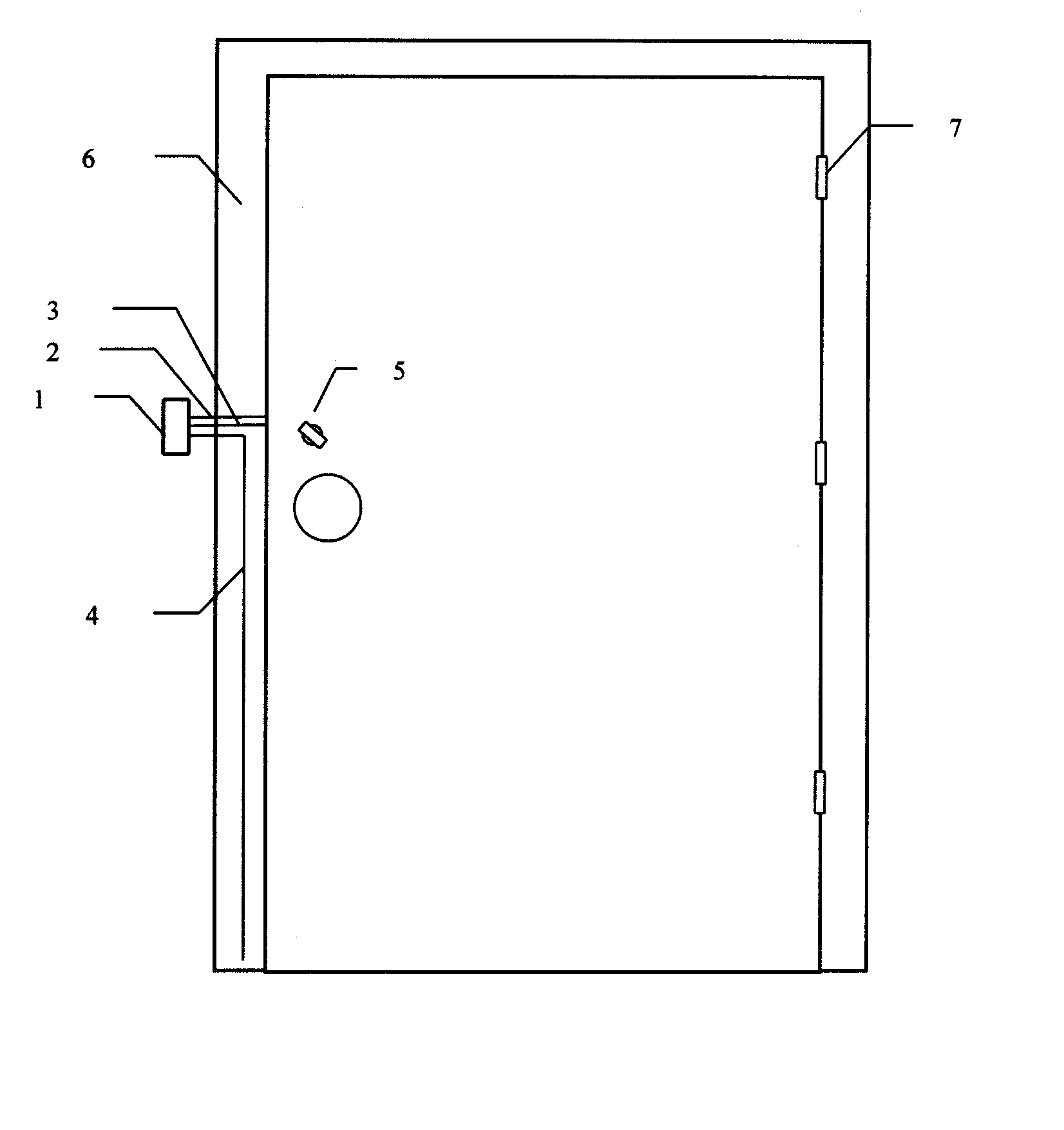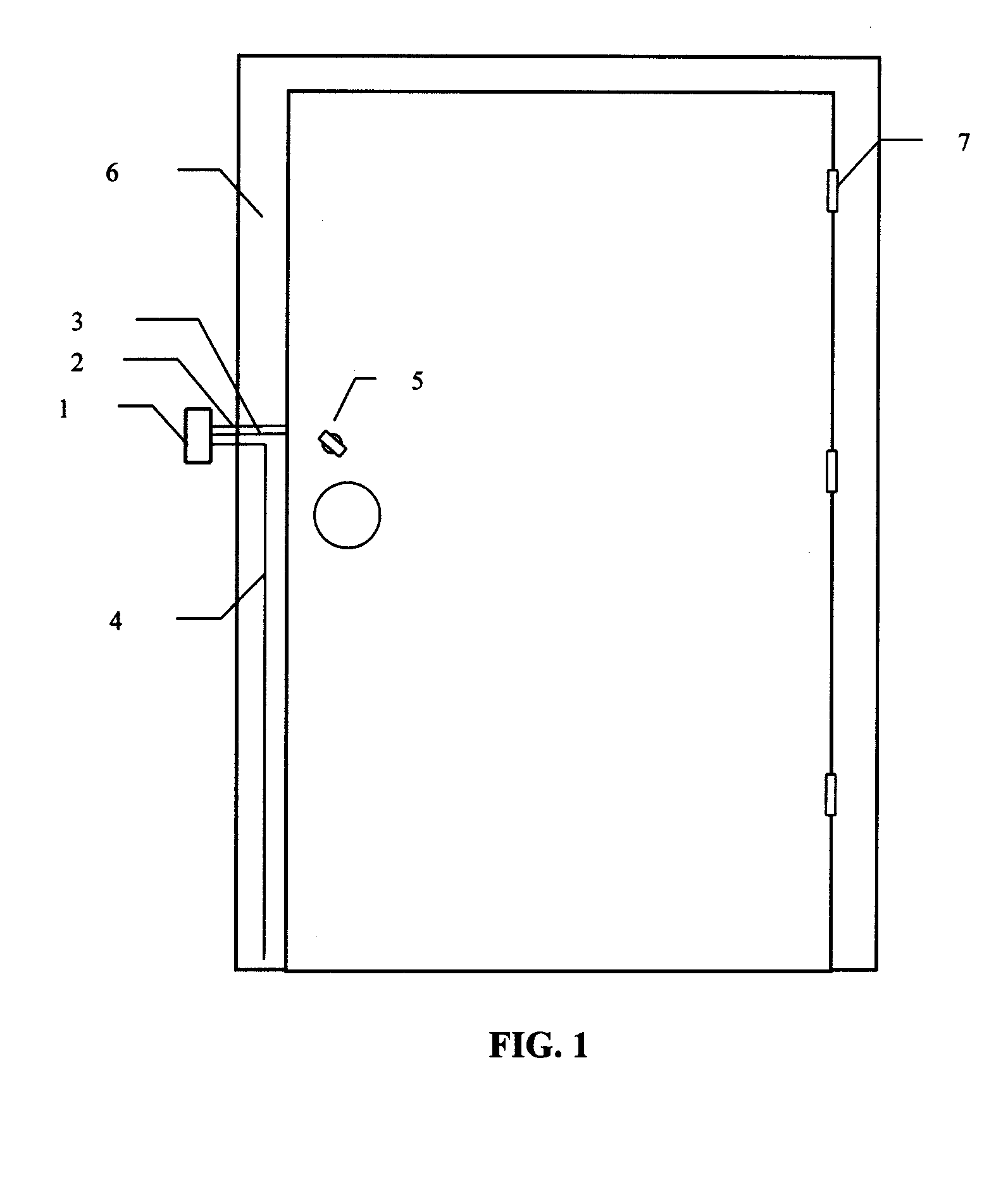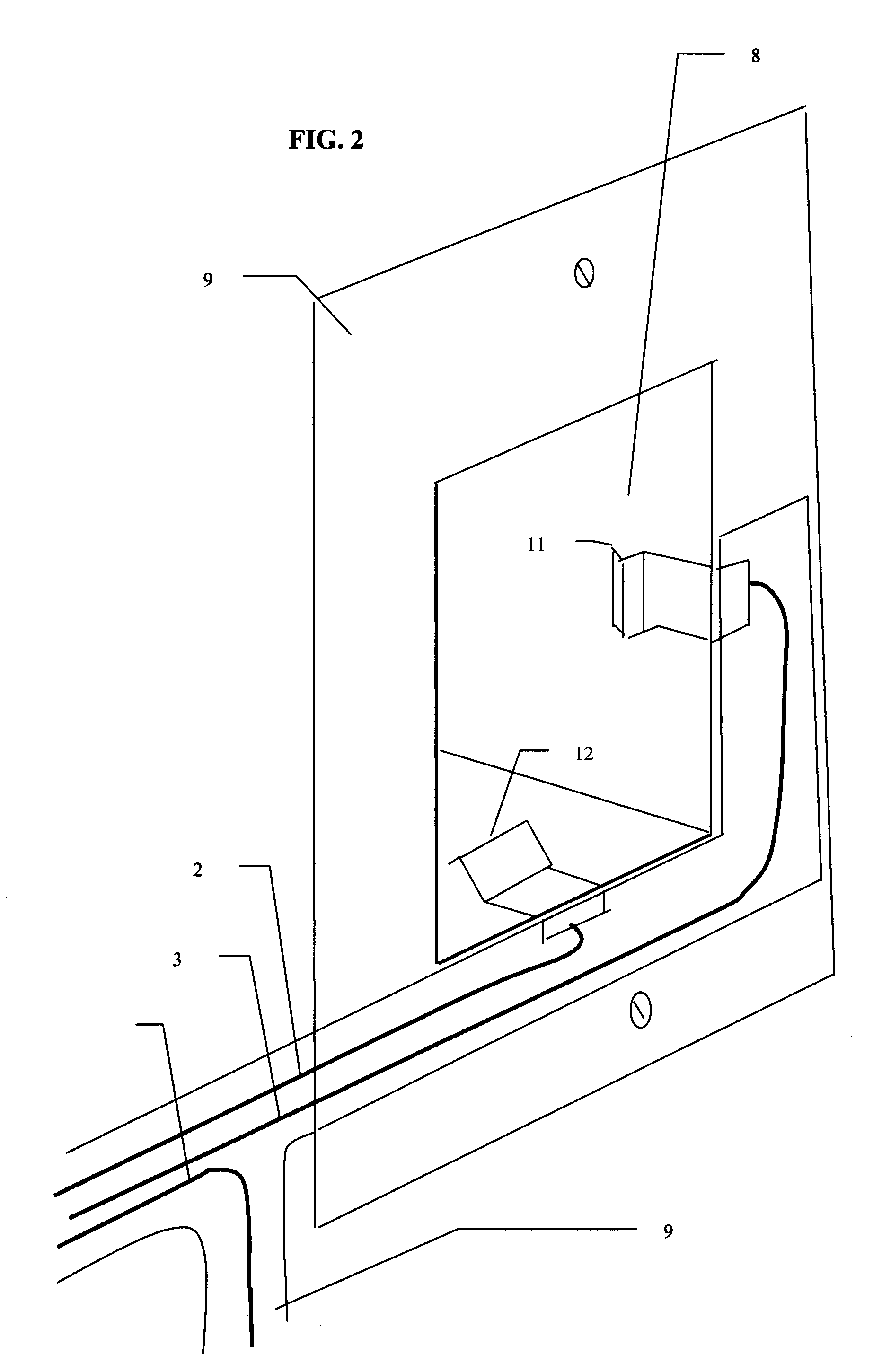Automatic Lockset Tamper Detection Device and Method
a detection device and lockset technology, applied in the direction of alarm locks, mechanical actuation of burglar alarms, instruments, etc., can solve the problems of increased time and care required to disable, false alarms and missed alarms, and unwanted attention, and achieve the effect of significantly increasing the capacitance between the lockset and the vertical wir
- Summary
- Abstract
- Description
- Claims
- Application Information
AI Technical Summary
Benefits of technology
Problems solved by technology
Method used
Image
Examples
Embodiment Construction
[0012] Referring now to FIG. 1, there is shown a door with lockset. The door is fitted into door frame 6 to which it is secured by hinges 7. To lock or unlock the door from the inside, bolt actuator 5 is rotated in one direction so as to extend the bolt and thereby lock the door, or in the opposite direction to retract the bolt and unlock the door. Generally this operation is accomplished by a key on the outside or a rotatable knob on the inside. Adapted to the door and frame are three conductors, 2, 3, and 4, shown as they are positioned within a ribbon cable and against the door frame.
[0013]FIG. 2 shows bolt receptacle 8, latch plate 9, and two leaf-spring contacts 11 and 12. The leaf-spring contacts are secured within the bolt receptacle so as to ensure that they are wiped by the metal bolt as it extends or retracts. The material, position, and shape of these contacts ensures reliable electrical contact with the bolt and provides sufficient deflection so as to not interfere with...
PUM
 Login to View More
Login to View More Abstract
Description
Claims
Application Information
 Login to View More
Login to View More - R&D
- Intellectual Property
- Life Sciences
- Materials
- Tech Scout
- Unparalleled Data Quality
- Higher Quality Content
- 60% Fewer Hallucinations
Browse by: Latest US Patents, China's latest patents, Technical Efficacy Thesaurus, Application Domain, Technology Topic, Popular Technical Reports.
© 2025 PatSnap. All rights reserved.Legal|Privacy policy|Modern Slavery Act Transparency Statement|Sitemap|About US| Contact US: help@patsnap.com



